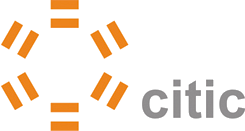SUBMISSION GUIDELINES
Submission guidelines
Papers submitted to SISAP 2013 must be written in English and formatted according to the LNCS guidelines. Full papers can be up to 12 pages, while short papers, case-studies/applications, and demos can be up to 6 pages (read below for types of contribution). By submitting a paper, its authors commit to having the paper presented at the conference by at least one of them if the paper is accepted.
Papers will be submitted in PDF format through EasyChair.
If you experience any problems during the submission, you can contact the organization at [email protected].
Contributions
Authors are invited to submit previously unpublished papers on their research in the
area of similarity search and applications. Papers should present original research
contributions which bring out the importance of algorithms to applications. SISAP
submissions can be of three kinds (full details will be announced shortly):
- Research papers (full and short): SISAP accepts both full (12 pages) and short papers (6 pages). The full papers are expected to be descriptions of complete technical work, while the short papers will describe interesting, innovative ideas, which nevertheless require more work to mature - vision papers should also be submitted as short papers. All papers, regardless of size, will be given an entry in the conference proceedings.
- Case-studies and applications: Submissions describe applications of existing similarity search technologies to interesting problems, including a description of the encountered challenges, how they were overcome, and the lessons learned. All papers on this track will be given an entry in the conference proceedings and a presentation slot, though the presentation slot duration may be shorter than for full research papers.
- Demonstration papers: Submissions should provide the motivation for the demonstrated concepts, the information about the technology and the system to be demonstrated (including a system description, functionality and figures when applicable), and should state the significance of the contribution. Evaluation criteria for the demonstration proposals include: the novelty, the technical advances and challenges, and the overall practical attractiveness of the demonstrated system. Demonstration papers will also be given an entry in the conference proceedings – online demos are expected at the conference.





